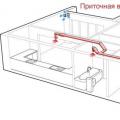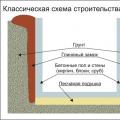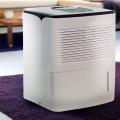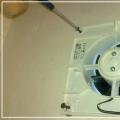Maintaining a normal microclimate inside the apartment is the key to the health of all its inhabitants. There is a certain norm of air humidity in the apartment, which, if it is violated, will have a bad effect on well-being. Therefore, it is very important to maintain the norm of humidity in your apartment by removing excess moisture in the air. What is a normal indicator and how to change it is described in this article.
What humidity should be in the apartment?
The exact answer is indicated in the state standard under the number 30494-2011. It regulates the characteristics of the microclimate inside the room. In accordance with the submitted normative document, the permissible norm of air humidity in any apartment must be observed at a level of 30 to 60 percent in summer and 30 to 45 percent in winter. At the same time, for the winter time, the limit indicator is set - 60%, and in the summer period it should not exceed 65 percent.
It should be noted here that the values given in the state standard are focused mainly on designers and maintenance personnel, and not on the residents themselves. This is noticeable at least by the fact that for the winter season the percentage decreases compared to the summer season. The thing is that in the cold, the air temperature is much lower, which affects the level of relative humidity when heated inside the apartment. Designing and maintaining buildings to maintain the "summer" norm in the winter is quite a challenge. On the other hand, the indicator of air humidity must be brought to such a level that residents do not experience health problems.
Important! According to physiologists, regardless of the period, the optimal percentage of humidity should be maintained at a level of 40 to 60 percent.
If the humidity index in the room is at the level of 30 percent, many people feel it is “dry”, which can provoke negative consequences for the body. This is clearly not enough for a wide range of plants that are grown on windowsills - in such an environment they quickly wither and then completely dry out. For our latitudes, the optimal indicator for indoor flowers is from 40 to 70 percent. Accordingly, it should be moist, but within reasonable limits.
Norms for individual premises
Judging by the figures given above, we can draw the following conclusion - with the onset of winter cold weather, the air dries up. The optimal humidity level in a living space should be maintained in all rooms, regardless of how much time people spend in them.
- Children's. In the children's room, small residents freeze or overheat faster. Due to insufficiently developed immunity, it is more difficult for them to endure various kinds of diseases. Therefore, a healthy microclimate must be created for the child. The ingress of dry air adversely affects the nasopharyngeal mucosa, because it gradually loses its moisture supply. Ultimately, this leads to coughing, bronchitis, runny nose. Dry air is a source of increased danger for newborns. It's simple - the skin suffers from a lack of moisture, which first provokes peeling, and then leads to atopic dermatitis. The optimal rate is from 50 to 60 percent.
- Bathroom and kitchen. As you know, the kitchen, bathroom and toilet are places where real indicators go beyond all acceptable limits. When showering, bathing or cooking, the humidity and temperature levels rise significantly. The solution to the problem is the installation of a high-quality ventilation system. If the power of the hood is insufficient, it is necessary to additionally equip it with another fan, while simultaneously ventilating the rooms with greater intensity. It is recommended to make it so that it is saturated with relative humidity - for example, 50-60 percent.
- Living room. It is this room that is the most spacious and largest. Family members spend the most time here. A comfortable indicator is equated to a bathroom, kitchen and toilet - from 40 to 50 percent. In such a microclimate, indoor flowers and pets also feel good, household appliances and furniture work fully.
- Greenhouse. If the area of the apartment is sufficient for arranging a winter garden, do not forget that comfortable temperature conditions and high-quality lighting are far from the only factors that need to be paid more attention. The optimal dose of moisture for plants varies from 50 to 70 percent, depending on the type of flowers and their origin.
- Study. For one's own library or workplace, the recommended amount is 30 to 40 percent. With its increase, the books will quickly deteriorate, the ink on the documents will begin to “float” inside the polyethylene file, and the equipment will begin to rust and oxidize faster. As a rule, the microclimate in the rooms intended for work is characterized by dry air, so it is recommended, if possible, to increase the performance.
- Pharmacy. In accordance with the technical requirements, the permissible norm of humidity in a pharmacy according to a hygrometer varies from 40 to 60 percent. At this level, all drugs inside will be stored correctly. Three orders issued by the Ministry of Health regulate the level of humidity in the pharmacy.
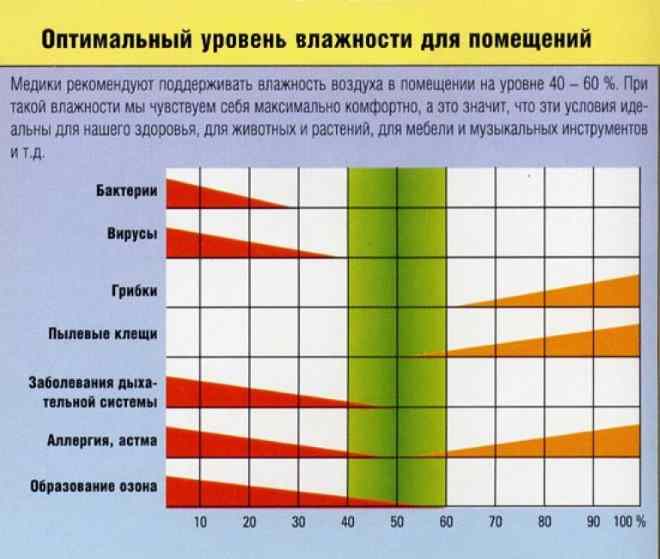
Optimum humidity according to GOST
Permissible rules and requirements for the sanitary norm of air humidity are regulated by Sanpin. Below are the norms of indoor air humidity according to SanPin, depending on the type of room.
- Bedroom. At temperatures up to 20 ° degrees, the indicator should not exceed 55 percent and not be lower than 40.
- Children's. Many people wonder about what humidity should be in a child's room. The answer is as follows - from 50 to 60 percent, while the allowable temperature should not exceed 24 ° C.
- Living room. According to temperature indicators, it is necessary to focus on the nursery, but the humidity should be a maximum of 50 percent.
- Bathroom. It is for this room that the minimum temperature level is set - from 21 ° C, the maximum - 2 ° more. The size is the same as in the living room. The indicators are considered optimal if there is an additional ventilation system inside.
- Kitchen. To maintain a healthy microclimate, it is also necessary to equip the air ducts with a ventilation and air conditioning system. Level - from 40 to 50 percent.
- Toilet. The values are identical to the entrance hall - both rooms should have a value of 40 to 45 percent.
- Study. Given the presence of a large number of paper products - folders, documents, books, brochures, and so on, the recommended humidity during the warm period should be somewhat lower - from 30 to 40 percent. By the way, the office is a room with a minimum value of humidity in general.
Important! Sanpin also indicates what should be the humidity in the apartment in winter. Generally speaking, we can conclude that it is necessary to increase the humidity due to the frequent entry of cold air inside (opening windows, doors, open ventilation ducts, and so on).
The consequences of exceeding the humidity norm
Always be aware of the danger of high humidity. So that it does not harm human health, it is necessary to check the permissible indicator from time to time. Failure to comply with this requirement leads to a number of negative consequences.
- The frequency and degree of complexity of respiratory diseases is increasing. Residents of the apartment will more often suffer from a runny nose, allergies, high fever. Worse, asthma and bronchitis appear.
- Comfortable living becomes impossible - people begin to notice stuffiness or dampness inside the premises.
- "Freshness" disappears - harmful bacteria and microorganisms begin to multiply more and more intensively. They can become a source of serious illness, so it is strongly recommended to keep the level within acceptable limits.
- Washed clothes will dry much longer.
- Houseplants inside the apartment will rot.
And this is not a complete list of troubles that the owner may face. So, for example, due to too high humidity, mold begins to appear on the walls and ceiling. Wooden products lose their original strength.
How to measure air humidity?
The current indicator can be determined using improvised means or a humidity measuring device. Let's consider both options.

How to reduce air humidity?
There are situations when the air inside the room is too humid. There are several reasons - a reservoir near the apartment, a dilapidated roof or living near the basement. The most reliable way is to perform repairs using waterproofing materials. It is not always necessary to resort to cardinal methods - there are alternative ways to normalize the state of the air in the room. The most effective is the use of dehumidifiers. They are divided into two categories - adsorption and compressor type.
You can also get by with traditional methods, especially when the help of special devices is not enough. For example, frequent airing, saturating the room with sunlight, cleaning the ventilation duct in the kitchen and bathroom.
In general, the humidity in the room should always be maintained at an adequate level. Otherwise, the appearance of health problems, failure of household appliances, damage to paper products, and the development of pathogens are not ruled out. The choice in favor of one or another method is made depending on the personal preferences of the homeowner.
In conclusion, we suggest that you familiarize yourself with the video material

